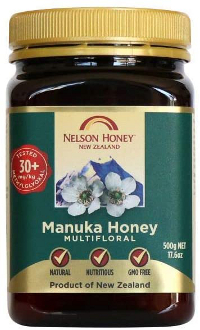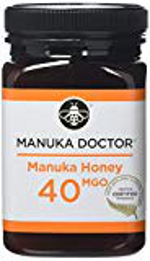Description
If you have bought Queen Bee Manuka Honey in the past, you may have noticed that there has been a change in the way the honey is graded.
Previously, Queen Bee graded its honey using what they called a TA number (Total Activity), but now the honey is graded according to its level of methylglyoxal or MGO for short.
This has been done in response to new regulations and guidelines in New Zealand on how manuka honey is labelled.
Queen Bee Manuka Honey 100+ Methylglyoxal is sourced from New Zealand, which is famous for its natural beauty and unspoiled landscapes as well as being the source of manuka honey as the manuka tree is native to New Zealand.
Honey bees then forage for nectar from the manuka tree and take it back to their hives where the real magic occurs and the nectar is converted into honey, so it’s true to say that manuka honey is a genuinely natural product.
Queen Bee produces a variety of different types of manuka honey and this one with a methylglyoxal level of 100+ is the lowest level of MGO available.
However, the level of MGO is not always so important if you just want to get a taste of this unique and exciting type of honey, and describing the taste in words is difficult because the honey is rich in complex flavours.
Manuka honey is often rich in texture and flavour and has an intense sweet almost caramel taste but is combined with something more earthy and herbaceous.
For those interested in the unusual characteristics of the honey, you could try Queen Bee monofloral manuka honey MGO 200+, which is a purer manuka honey.
As a reminder, infants below the age of twelve months are advised not to consume honey of any variety.












